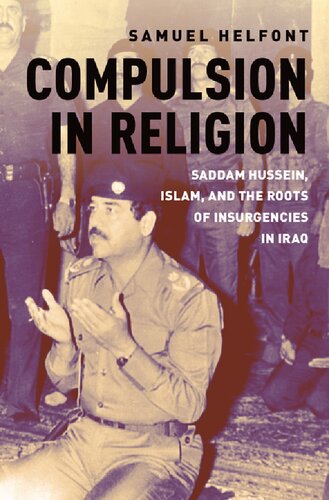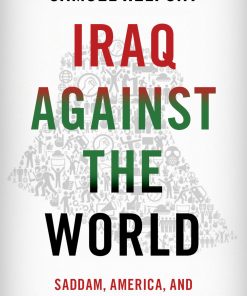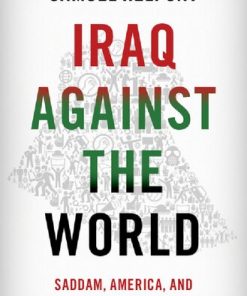Compulsion in Religion Saddam Hussein Islam and the Roots of Insurgencies in Iraq 1st edition by Samuel Helfont 0190843335 9780190843335
$50.00 Original price was: $50.00.$25.00Current price is: $25.00.
Compulsion in Religion: Saddam Hussein, Islam, and the Roots of Insurgencies in Iraq 1st edition by Samuel Helfont – Ebook PDF Instant Download/DeliveryISBN: 0190843335, 9780190843335
Full download Compulsion in Religion: Saddam Hussein, Islam, and the Roots of Insurgencies in Iraq 1st edition after payment.

Product details:
ISBN-10 : 0190843335
ISBN-13 : 9780190843335
Author : Samuel Helfont
Samuel Helfont draws on extensive research with Ba’thist archives to investigate the roots of the religious insurgencies that erupted in Iraq following the American-led invasion in 2003. In looking at Saddam Hussein’s policies in the 1990s, many have interpreted his support for state-sponsored religion as evidence of a dramatic shift away from Arab nationalism toward political Islam. While Islam did play a greater role in the regime’s symbols and Saddam’s statements in the 1990s than it had in earlier decades, the regime’s internal documents challenge this theory. The “Faith Campaign” Saddam launched during this period was the culmination of a plan to use religion for political ends, begun upon his assumption of the Iraqi presidency in 1979. At this time, Saddam began constructing the institutional capacity to control and monitor Iraqi religious institutions. The resulting authoritarian structures allowed him to employ Islamic symbols and rhetoric in public policy, but in a controlled manner. Saddam ultimately promoted a Ba’thist interpretation of religion that subordinated it to Arab nationalism, rather than depicting it as an independent or primary political identity.The point of this examination of Iraqi history, other than to correct the current understanding of Saddam Hussein’s political use of religion throughout his presidency, is to examine how Saddam’s controlled use of religion was dismantled during the US-Iraq war, and consequently set free extremists that were suppressed under his regime. When the American-led invasion destroyed the regime’s authoritarian structures, it unwittingly unhinged the forces that these structures were designed to contain, creating an atmosphere infused with religion, but lacking the checks provided by the former regime. Groups such as the Sadrists, al-Qaida, and eventually the Islamic State emerged out of this context to unleash the insurgencies that have plagued post-2003 Iraq.
Compulsion in Religion: Saddam Hussein, Islam, and the Roots of Insurgencies in Iraq 1st Table of contents:
Part I The Penetration of Iraq’s Religious Landscape 1979–1989
1. Saddam Takes Control
2. Co-opting and Coercing Religion in Saddam’s Iraq
3. Co-opting and Coercing Shi‘ism
4. Suppressing the Islamist Opposition
5. Addressing the Limits of Coercion and Co-optation
Part II The Gulf War and Its Aftermath 1990–1993
6. Continuity and Change in the Gulf War
7. Iraq’s Religious Landscape in the Wake of the Gulf War
Part III The Faith Campaign 1993–2003
8. A Transformed Religious Landscape
9. The Regime and the Shi‘is in the 1990s
10. Mechanisms of Control
11. Putting the System to Work
Part IV The Invasion of Iraq and the Emergence of Religious Insurgencies
12. American Misconceptions about Iraq and the 2003 Invasion
13. Emergence of Religious Insurgencies in Iraq
People also search for Compulsion in Religion: Saddam Hussein, Islam, and the Roots of Insurgencies in Iraq 1st:
there is no compulsion in religion
there is no compulsion in religion meaning
islam no compulsion in religion
what does no compulsion in religion mean
no compulsion in religion abrogated
Tags: Compulsion, Religion, Saddam Hussein, Islam, the Roots of Insurgencies, Iraq, Samuel Helfont
You may also like…
Religion & Spirituality
Lifeworlds of Islam: The Pragmatics of a Religion Mohammed A. Bamyeh
History - American Studies
Religion & Spirituality - Religious Studies
Politics & Philosophy - Sociology
Religion & Spirituality - Bible
Politics & Philosophy
Politics & Philosophy - Government & Politics
Uncategorized












